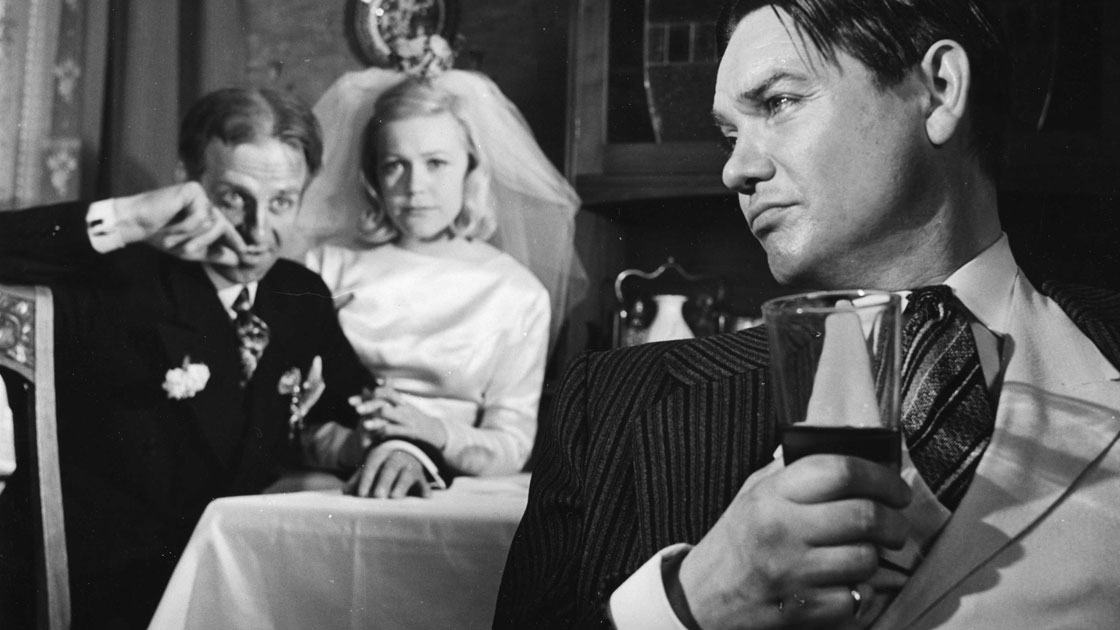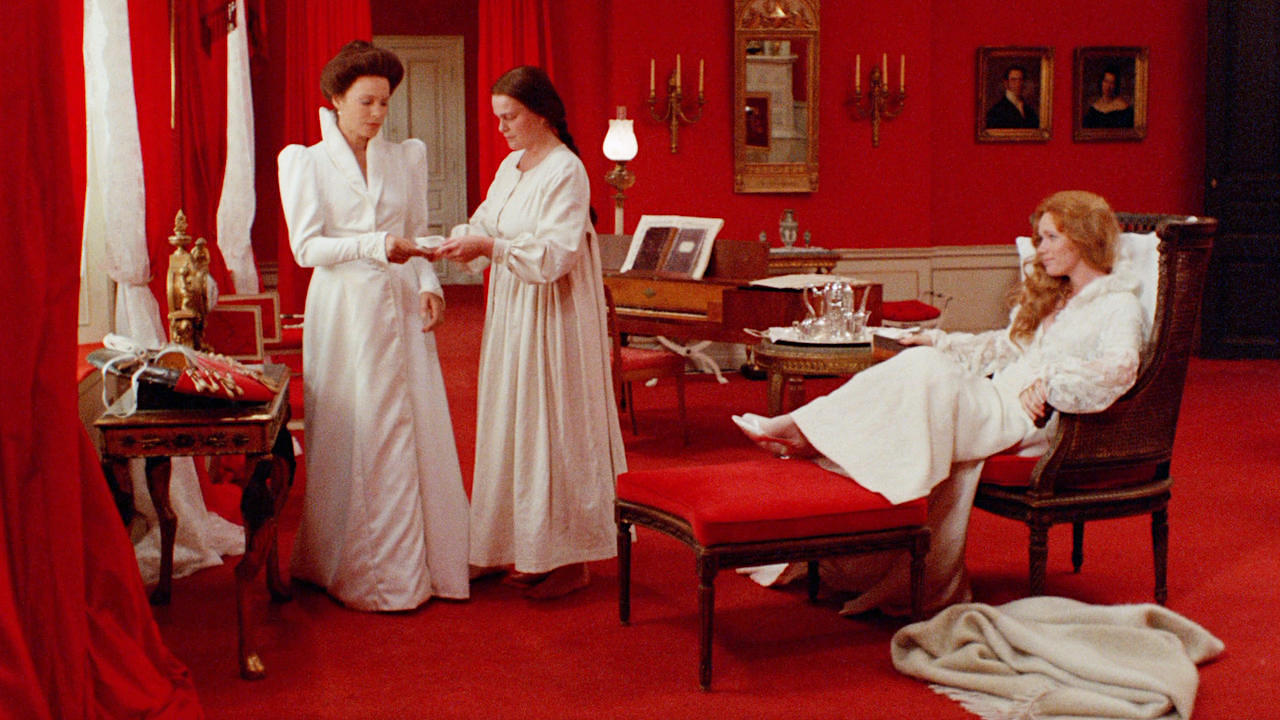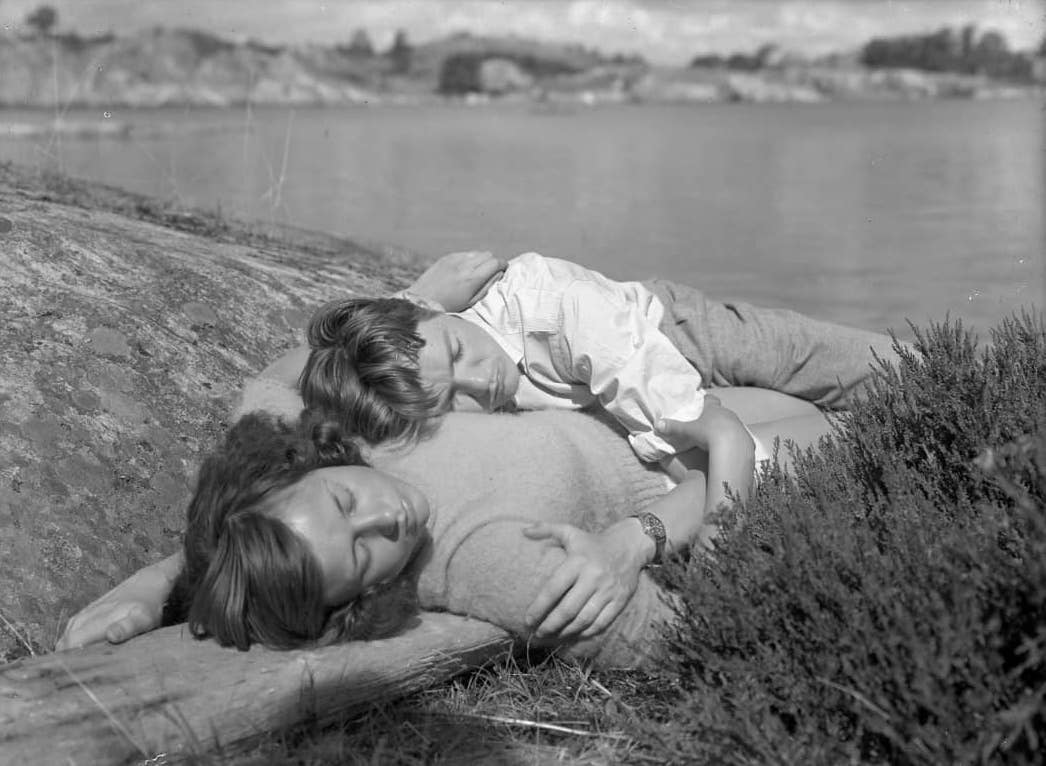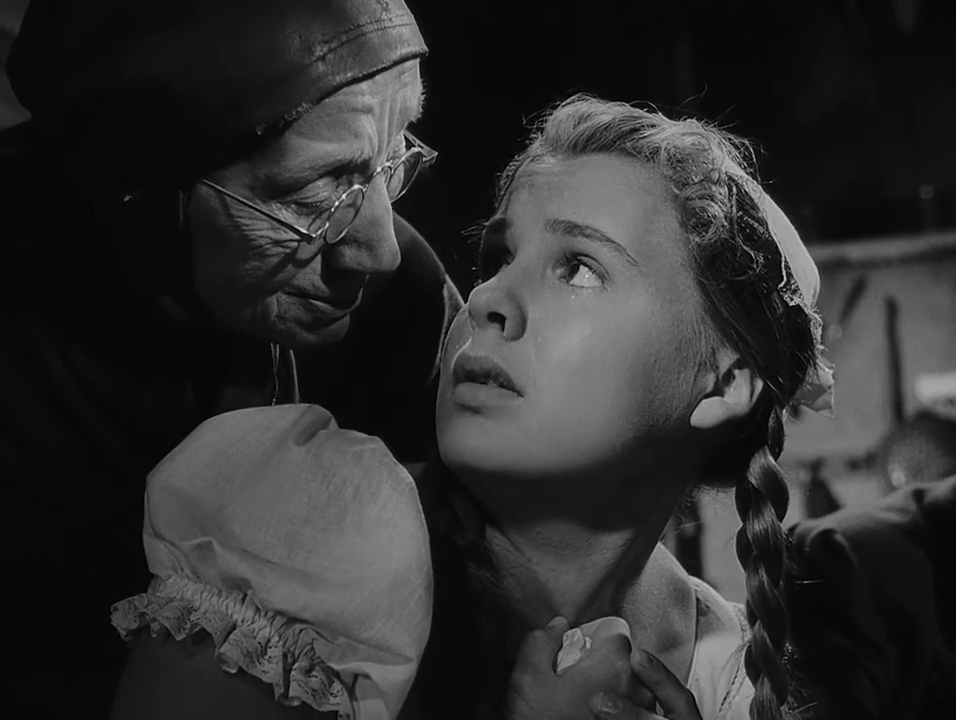Bröllopsbesvär [Wedding: Swedish Style] (Åke Falck, 1964)
Nov
11

Bride and groom, and resentfulness at front. DP: Rune Ericson.
A dysfunctional family*
On a wedding day, and night, a family's dirty secrets are laid bare.
* the Bales 2025 Film Challenge for November is, again, not date-based, but follows a sloppy schmaltzy all-American Thanksgiving-y narrative. Trying to make it work my way.
Sweden
Nattmara [Nightmare] (Arne Mattsson, 1965)
Oct
19
Tue
spoiler warning: click to toggle image

spoiler warning: click to read
Hands hold up a small diary. The camera is focussed on Tuesday the 19th of October, 1965. Handwriting, a chicken scrawl, reads CITROEN A66692 MAJ BERG ✝. Besides that the week is uneventful. DP: Max Wilén.
– What are you gonna do with tons of apples? They can't be sold! Ask any apple farmer! They just pile up and rot!
– The apple farmers?
– No. The apples!Äppelkriget [The Apple War] (Tage Danielsson, 1971)
Sep
17
National Apple Dumpling Day

Locals and a centaur – half man, half papier-mâché – enjoy a drink. DP: Lars Swanberg.
Apples, or dumplings, for National Apple Dumpling Day (USA)
A beautiful, picturesque part of Sweden will become… Deutschneyland! At least, that's the brilliant business plan Herr Volkswagner has. But the local apple farmers – a large family that's half human, half mythological creatures – have no need for an amusement park on their grounds.
“Everything is rotten. Decadence is everywhere. Why fight it?”Les créatures [The Creatures] (Agnès Varda, 1966)
Aug
29

Mylène (Catherine Deneuve) and Edgar (Michel Piccoli) Piccoli playing checkers at a small table. DPs: Willy Kurant, William Lubtchansky & Jean Orjollet.
Månen är en grön ost [The Moon Is a Green Cheese] (Mai Zetterling, 1977)
Aug
21
violet

A woman in a violet dress and sunhat, plays a harp in the middle of a lake (via). DP: John Bulmer.
Violet in food or fashion. If in doubt, pick a title with ALL the colours of the rainbow!*
During their stay in the family summer house, two sisters imagine themselves as adults, once for every colour of the rainbow.
* the Bales 2025 Film Challenge for August is not date-related but lists, for the most part, the colours of the rainbow.
Mitt hem är Copacabana [My Home Is Copacabana] (Arne Sucksdorff, 1965)
Aug
2

The favela children on the beach, playing with kites and mingling with the rich kids. DP: Arne Sucksdorff.
A kite in celebration of 浜松まつり, the Hamamatsu Kite Festival, which takes place on May 3–5*
Favela kids steal kites and sell them on in this Copacabana-set Nordic drama.
Toninho Carlos de Lima, Rico in the movie, was not a homeless kid from the favelas but lived in a house with his family when he was send to Sweden to promote Mitt hem är Copacabana. A wealthy Swedish couple offered to adopt him, and his natural mother reluctantly gave in hoping to prevent a life of crime for her son (source). That too, dear reader, is colonialism.
* the Bales 2025 Film Challenge for August is not date-related but lists, for the most part, the colours of the rainbow.
“It's just a dream, Agnes.” Viskningar och rop [Cries and Whispers] (Ingmar Bergman, 1972)
Aug
1
red

The three sisters in the red room (via). DP: Sven Nykvist.
Red: a building or structure*
– Anna
Red as an expression of inner and outer worlds. Even the scene transitions are red.
* the Bales 2025 Film Challenge for August is not date-related but lists, for the most part, the colours of the rainbow.
“I guess we like each other a lot, huh?”Sommaren med Monika [Summer with Monika] (Ingmar Bergman, 1953)
Jul
27

Monika (Harriet Andersson) and Harry (Lars Ekborg) rest in each other's arms. DP: Gunnar Fischer, still photography by Louis Huch.
Someone naps or sleeps*
– Monika Eriksson
* the Bales 2025 Film Challenge for July is, for unknown reasons, mostly not date-related and follows some sort of vacation narrative.
“I see what I see, and I know what I know. But nobody believes me.”Ansiktet [The Face / The Magician] (Ingmar Bergman, 1958)
Jul
14

Granny Vogler (Naima Wifstrand) telling a sobbing Sara (Bibi Andersson) that yes, she may indeed be a witch. DP: Gunnar Fischer.
– Granny Vogler
“Sometimes everything seems just like a dream. It's not my dream, it's somebody else's. But I have to participate in it. How do you think someone who dreams about us would feel when he wakes up. Feeling ashamed?” Skammen [Shame] (Ingmar Bergman, 1968)
Jun
12
Loving Day

Eva (Liv Ullmann) and Jan Rosenberg (Max von Sydow) (via). DP: Sven Nykvist.
A [favourite] movie couple for Loving Day (USA)
– Eva
After Vargtimmen (1968), the second of Bergman's Ullmann/Von Sydow cycle. It was followed by En passion (1969).
Against the backdrop of war, a violinist couple tends a garden – and marriage – on the island of Fårö.